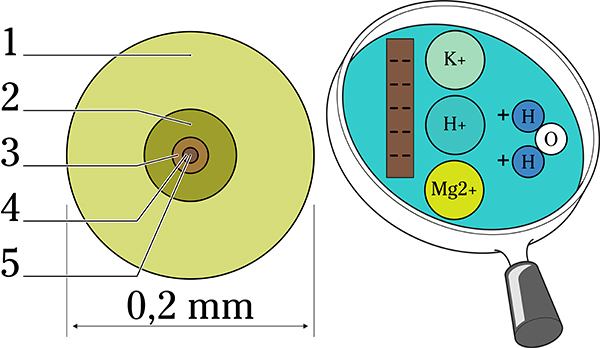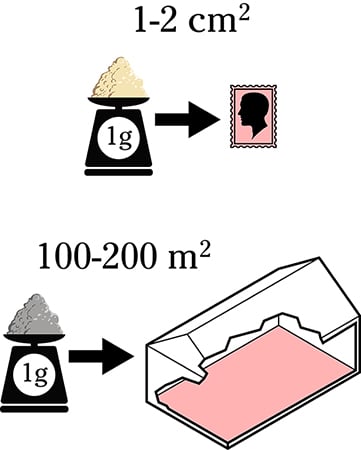
Soil basics
If you fully understand your soil, its building blocks as well as its characteristics, you hold a good foundation for an effective and sustainable farming.
To fully optimize your farm, we believe that you will need a deep understanding of how the soil works and reacts under different conditions. Because of this we have put together simple guides and facts about different soil types, soil structures and structure forming processes.
The building blocks of soil
The soil that is cultivated to create a seedbed only consists to half of solid material, while the remainder consists of pores filled with water or air. Of the solid material, clay and organic material have the strongest influence on the soil and determine its tillage properties.
Soil consists of around 50% solid material, with 50% pores in between. In simple terms, half of a soil clod is solid material and the other half is pores.
Pores with water or air
The solid material consists of either mineral particles of different size classes or of organic material. The important pores are filled with either air or water depending on how wet the soil is at a particular time, its structure and soil tillage. In the ideal case, half the pores are filled with water and half with air. However, in soils with an aggregated structure such as clays, the pore volume is somewhat higher (40-60%) than in single-grained soils such as sands (35-45%).
Silt holds water
A cultivated arable soil is often a mixture of different particle size groups. If gravel and sand dominate the soil texture, this gives permeable, dry and relatively infertile soils, while an inclusion of sand in a clay soil makes it warmer. Silty soils are often cold and water-retaining and can easily take up water through capillary rise. The finest mineral particles, clay, have a strong influence on the soil even at concentrations of around only 5%. Clay soils shrink and swell and impart an aggregated stucture to the soil, with cracks and crevices where roots can grown through the soil profile. The typical characteristics of various soils are often a function of the clay content, which strongly influences soil type and tillage.
Organic material positive
The organic material in the soil also has a very clear influence on the character of the soil. It consists to almost 60% of carbon (C) and originates from plant residues that have been decomposed by microorganisms. In this decomposition process (see image below), plant nutrients such as nitrogen (N), phosphorus (P) and sulphur (S) are released. The organic material can have enormous significance for soil properties and its influence is nearly always positive from the farmers perspective. It affects:
- structure and aggregate stability
- water management
- tillage
- nutrient reserves
- silting and crusting
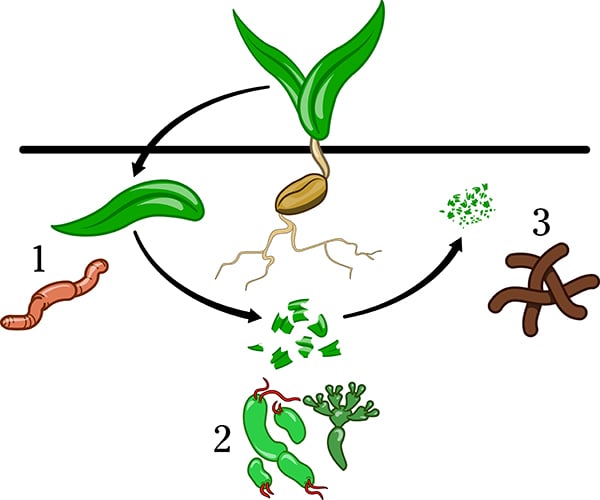
The decomposition process
- Soil fauna start decomposition of dead organic material, partly through breaking it down into smaller pieces and partly through digging holes in the soil, increasing the supply of oxygen. Earthworms play a specific and very valuable role by breaking down the material and mixing it into the soil.
- Bacteria and fungi continue decomposition in stages. The last phase, the formation of simple end-products that are available to plants (e.g. nitrate, phosphate and sulphate), is called mineralisation.
- Humus formation. The decomposition of various organic compounds proceeds through a series of intermediate products that are of an increasingly simple nature as decomposition advances. These intermediate products react with each other and with the compounds created by soil organisms. This leads to the formation of new chemical compounds that are transformed into high molecular weight, dark-coloured matter known as humic substances. These humic substances have the ability to bind positively charged ions of potassium, calcium and magnesium, for example.
Characteristics of different soil types
The soil types determines how and what we can grow and are the basis for all farming. Here is a quick guide to the characteristics of each soil type.
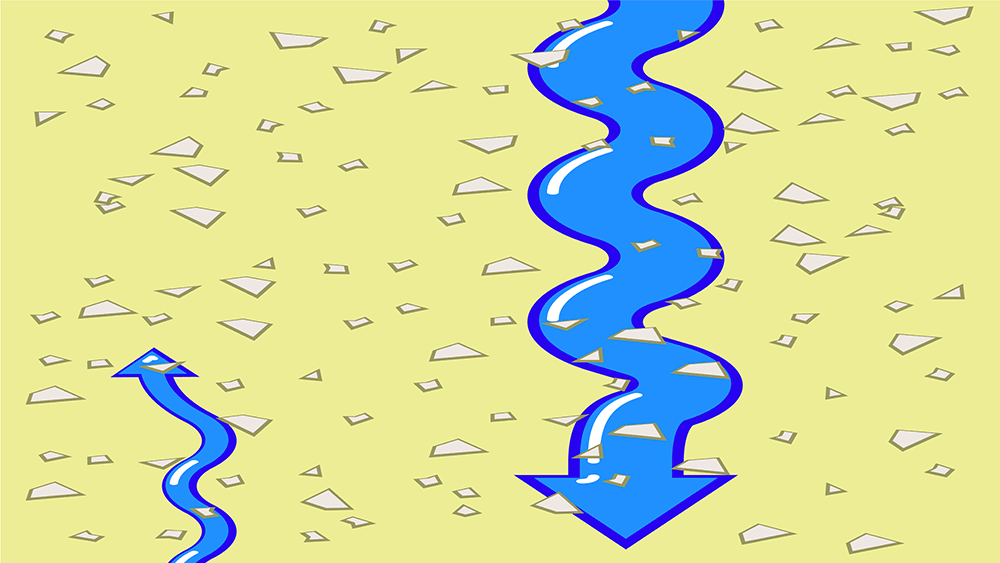
Sand soils and silt soils(3)
1. Sand soils
Sand soils are often dry, nutrient deficient and fast-draining. They have little (or no) ability to transport water from deeper layers through capillary transport. Therefore, tillage of sandy soils in the spring should be kept to a minimum in order to retain moisture in the seedbed. The nutrient- and water-holding capacity of sand soils can be improved through adding organic material.
2. Silt soils, 0-10% clay
These soils differ from sand soils by having a greater tendency to form a crust, which is often very hard. If they are over-tilled, they can become compact and this decreases their ability to infiltrate water in wet periods. In dry conditions they can become hard and difficult to till. However, they are generally easy to till and can store considerable amounts of water. They require good reconsolidation, but tillage in wet conditions should be avoided.

1. Sand soils
Sand soils are often dry, nutrient deficient and fast-draining. They have little (or no) ability to transport water from deeper layers through capillary transport. Therefore, tillage of sandy soils in the spring should be kept to a minimum in order to retain moisture in the seedbed. The nutrient- and water-holding capacity of sand soils can be improved through adding organic material.
2. Silt soils, 0-10% clay
These soils differ from sand soils by having a greater tendency to form a crust, which is often very hard. If they are over-tilled, they can become compact and this decreases their ability to infiltrate water in wet periods. In dry conditions they can become hard and difficult to till. However, they are generally easy to till and can store considerable amounts of water. They require good reconsolidation, but tillage in wet conditions should be avoided.
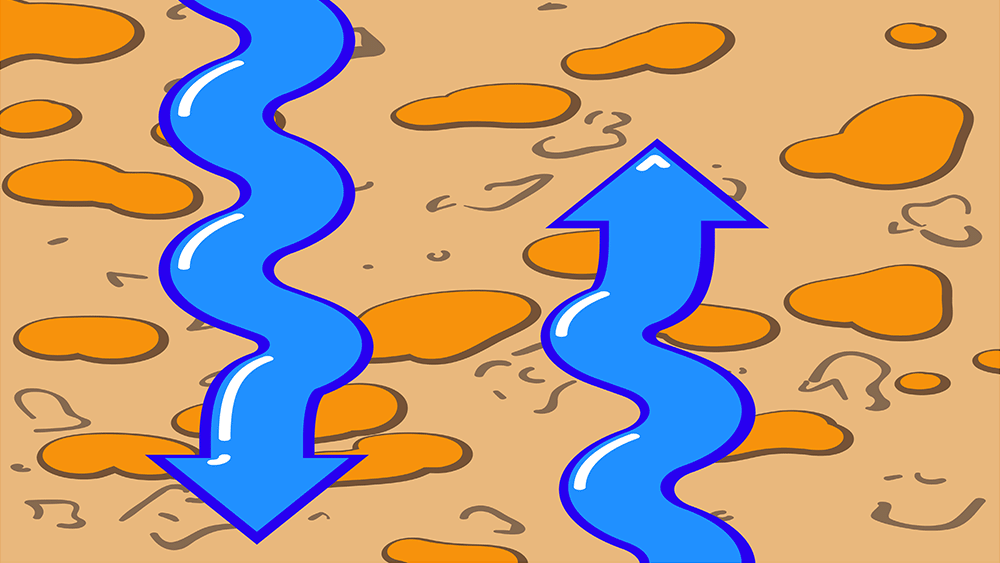
Clay soils(3)
3. Clay soils with 10-25% clay
These soils differ from those described above in that crusting can be very severe. The crust is often so hard that it has to be broken up. With low contents of clay and organic material, aggregate formation is often poor.
4. Clay soils with 25-40% clay
These soils have a good ability to transport water by capillary action from deep layers but the rate is slow, so plant water requirements are not met through capillary water. These soils are darker in colour and soil aggregation is more distinct. Aggregation decreases the risk of crusting. These soils must be tilled at the correct water content in order to be easily cultivated. There is a risk of clodding if conditions are too dry, or of smearing if they are too wet. These soils have a good ability to improve their structure through the action of climate, roots etc.
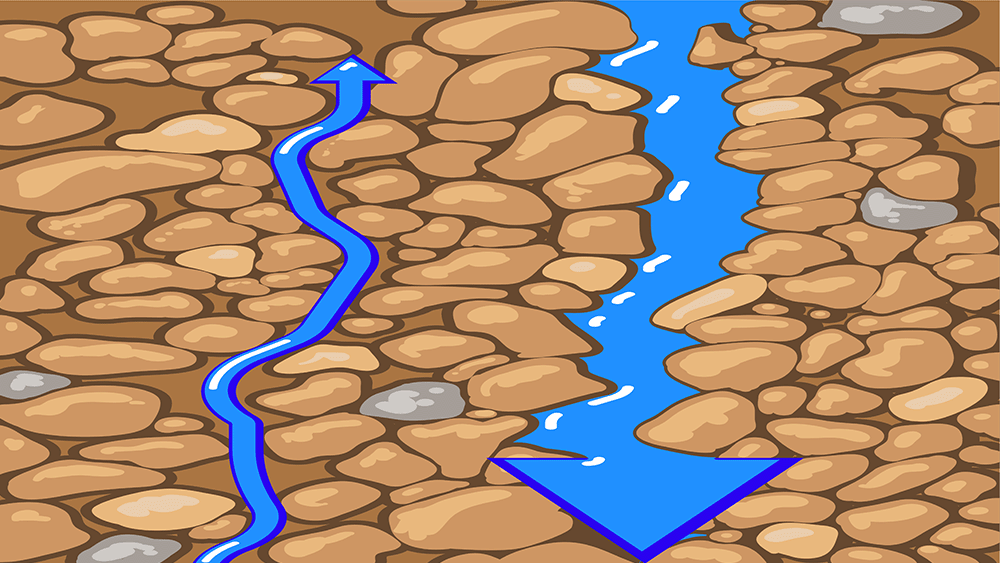
3. Clay soils with 10-25% clay
These soils differ from those described above in that crusting can be very severe. The crust is often so hard that it has to be broken up. With low contents of clay and organic material, aggregate formation is often poor.
4. Clay soils with 25-40% clay
These soils have a good ability to transport water by capillary action from deep layers but the rate is slow, so plant water requirements are not met through capillary water. These soils are darker in colour and soil aggregation is more distinct. Aggregation decreases the risk of crusting. These soils must be tilled at the correct water content in order to be easily cultivated. There is a risk of clodding if conditions are too dry, or of smearing if they are too wet. These soils have a good ability to improve their structure through the action of climate, roots etc.
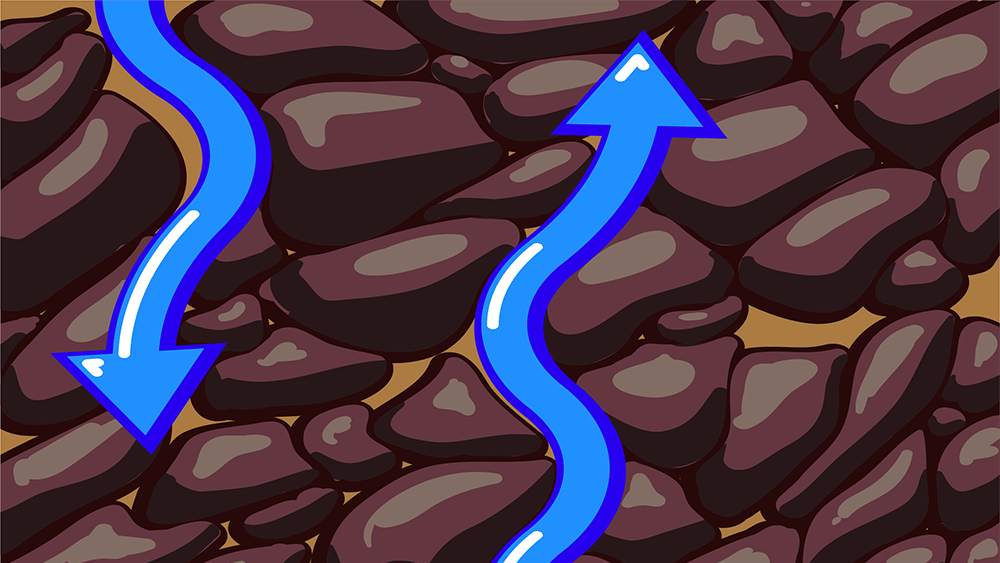
Clay soils 40%(2)
5. Clay soils with 40% clay
Heavy clays have a very high water-holding capacity, but most of the water is tightly bound and not available to plants. The humus content is often higher than in other mineral soils. They do not form a crust when they dry. These soils have a very good ability to improve their structure through e.g. freezing/thawing and drying/wetting. In cold winters the clay freezes apart and forms a very favourable aggregated structure in the topsoil layer. If the clay dries out without having been frozen, it can become very stiff and difficult to work.
In the water-saturated state these soils can be sticky and very impermeable to water. Due to the high clay content, the nutrient content is very high. Heavy clays need a high degree of recompaction around the seed when they are dry, but not when they are damp and plastic. The risk with tilling them in wet conditions is that it leads to soil compaction.
Soil structure
Soil structure describes the physical configuration of the soil. The sand particles in a sand soil are held together weakly and do not form aggregates, while the clay particles in a clay soil readily form aggregates. These aggregates make clay soil easy to till and improve the transport of air and water.
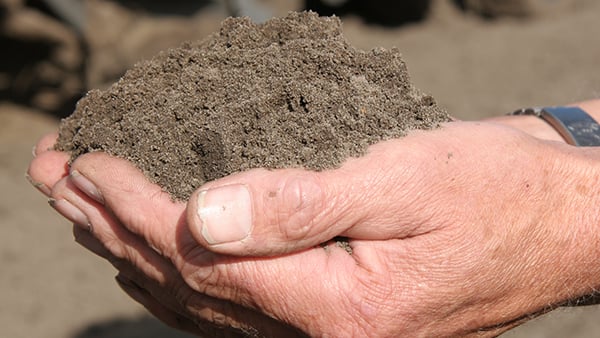
Sand soils are not held together
A sand soil such as this (see image) is an example of a single-grained structure. The grains of sand are relatively large and often only held together weakly. Even sand soils with a higher content of colloids fall apart easily when exposed to pressure in the soil. A sand soil with a low clay content often requires deeper cultivation in order to create a good arable soil and growing site. The low clay content gives the sand soil a low internal structure forming capacity.
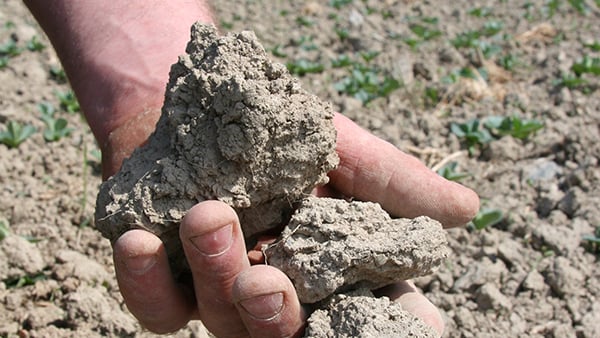
Clay soils becomes aggregated
A clay soil such as this (see image) is held together and often has an aggregated structure. Even at a content of 5%, the clay has a very strong impact on the soil and dominates its properties.
The aggregated structure is the result of a range of processes in the soil that in combination form aggregates. These structure forming processes affect the soil structure in a dynamic interplay with soil tillage.
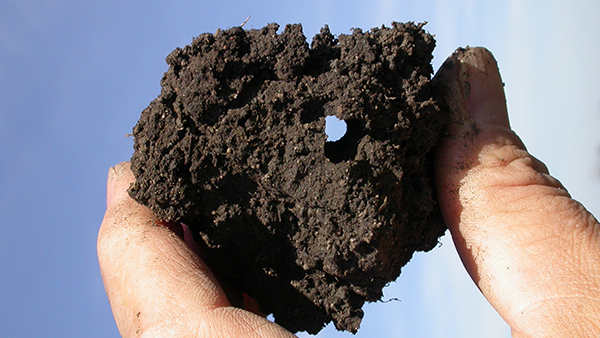
Aggregates improve the soil
When clay particles are bound together in aggregates, the properties of the soil are almost always improved. An important effect is that soil tillage becomes easier. The movement of air is also better, improving the transport of oxygen to and carbon dioxide from the root system. The aggregate structure also improves soil permeability to water and its water-holding capacity. Good soil structure makes an arable clay soil a more productive growing site, since all essential functions for the plant and its root system are provided. This gives faster growth and higher yield.
Structure forming processes
The structure of a clay soil is the result of a number of different processes, which together give the soil profile its character. Soil tillage also affects soil structure through disturbing it to some depth and mixing in harvest residues.

Frost or heat
Frost and cold in the winter and heat in the summer have the same effect on the soil – removal of water. Both processes dry out the soil and when water is removed the clay particles are pressed closer to each other. The result is mechanically created aggregates.

Earthworms
Earthworms eat plant remains and mix them into the soil as they munch their way through the soil profile. Their casts act as adhesive between the soil particles and increase aggregate stability. Earthworms also stimulate the soil microorganisms, which increase soil stability through producing mucus and other binding compounds.

Plants
Plants dry out the soil through their water uptake in the same way as frost and heat. When the soil dries out, the clay particles are forced closer to each other, creating and strengthening aggregates. Plant roots also increase the amount of organic material in the soil and leave root channels behind. Overall, this means that a plant cover on soil builds up the soil structure, while a bare soil without growing plants breaks it down.

Chemical processes
Organic material, iron and aluminium oxides and carbonates stabilize the aggregates through acting as binding agents. In soils that are not tilled, this process plays a major role. However, repeated soil tillage decreases the stability of the aggregates and in an arable soil the structure is therefore more dependent on soil clay content and biological activity.

Drainage
Drainage transports away excess water in the soil profile and thus dries out the soil. In this way, drainage helps to improve the soil structure. Very few soils are naturally self-draining and therefore drainage is essential for uniform drying of the soil, decreased soil compaction and early establishment of crops in autumn and spring.

Organic material
Animal manure, intercrops, harvest residues etc. supply organic material to the soil. In the short term, this increases biological activity and causes a bloom of soil microorganisms. In the long term, it increases the content of organic material, which improves aggregate stability.

Heavy machinery
On arable soils, passes with heavy machinery often cause soil compaction. Soil compaction results in the large pores in the soil being compressed and eliminated. This means that rapid transport of water and air to the roots is impeded. Drainage is also restricted and it becomes more difficult for the roots to force their way down through the soil.
The outcome is the soil profile
Together, all the structure forming processes described above result in a soil profile that often has finer aggregates at the surface and coarser aggregates further down. The processes are dynamic and therefore the structure varies over time. For farmers with their sights set on the future and sustainable production, it is important to understand the significance of factors controlling the structuring process. Through diagnosis, it is rather easy to get a picture of soil structure.
Tillage affects structure
Cropping system affects the soil structure and the placement of plant residues determines whether to employ conventional or minimal tillage or even direct seeding. The tilled layer often has a looser structure, while a denser layer is created at tillage depth. This denser layer develops regardless of tillage technique used, but the depth at which it arises varies. To avoid creating dense layers in the soil, it is important to vary tillage depth.
Dictionary:
Capillary = capillary water is water that can rise upwards in the soil within the fine pores through binding of the water molecules in the pores, adhesion, but also through attraction between water molecules, cohesion. Silty soils have high capillarity and combine a large height of capillary rise with a high rate of capillary rise
Cations = positively charged ions in the soil, e.g. potassium, calcium and magnesium
Colloid = colloids are the finest particles in the soil, with an average diameter of less than 0.0002 mm. The colloids include some organic material and fine clay
Mineral particles = soil mineral particles are the inorganic smallest constituents, which have been formed at the site through weathering of various minerals and rock types or have been transported there, e.g. by glaciers. The properties of the soil are strongly dependent on soil particle size according to table Particle size distribution
Pore = soil pores are the spaces, channels and cracks in the soil, which are filled with either water or air depending on the actual water content of the soil
Soil fauna = earthworms, woodlice, springtails, centipedes, mites and other animals that open the door for bacteria and fungi through dividing and breaking apart plant residues in their mouth, stomach and intestines
Specific area = the combined surface area of the soil particles is expressed as square metres per gram of dry soil and is an important characteristic since it indicates the amount of nutrients the soil can release through weathering and bind to its surfaces
Texture = soil texture refers to the proportions of mineral particles with different average diameter, i.e. the relative proportions of sand, silt and clay in particular according to table Particle size distribution
Dictionary:
Capillary = capillary water is water that can rise upwards in the soil within the fine pores through binding of the water molecules in the pores, adhesion, but also through attraction between water molecules, cohesion. Silty soils have high capillarity and combine a large height of capillary rise with a high rate of capillary rise.
Clay = clay is the smallest particle group, with an average particle diameter of less than 0.002 mm. See table "Particle size distribution" in chapter The building blocks of soil.
Dictionary:
Aggregated structure = when the primary particles come from the clay particle size group, they are bound to each other and form aggregates that can then be stabilised by organic material, lime and various chemical precipitates
Carbon dioxide = gaseous waste product of cell respiration in the roots that is also the building brick together with water for sugars created by the plant through photosynthesis
Colloid = colloids are the finest particles in the soil, with an average diameter of less than 0.0002mm. The colloids include some organic material and fine clay
Oxygen = element that occurs in air as oxygen gas at a concentration of 21% – vital for cell respiration in plants and their roots
Single-grained structure = in a soil with single-grained structure, the primary particles are held together very weakly or not at all in some form of aggregate
Texture = soil texture refers to the proportions of mineral particles with different average diameter, i.e. the relative proportions of sand, silt and clay in particular according to table "Particle size distribution" in chapter The building blocks of soil
Dictionary:
Carbonates = carbonate (CO32–) is a salt of carbonic acid (H2CO3) – often found in the soil as calcium carbonate (CaCO3) and also forms the basis of liming compounds, which are usually crushed or milled calcium carbonate
Frost = means that the soil water freezes to ice when the temperature sinks – positive from a soil structure perspective since the volume of water increases when ice is formed and this process loosens the soil
Intercrops = crops such as grass, mustard, clover etc., which grow in the period between main crops, e.g. between winter wheat and spring barley. Used for various purposes – decreasing nitrogen leaching from the soil, increasing the supply of organic material, attracting wild birds and animals, etc
Iron and aluminium oxides = chemical compounds between iron (Fe) and aluminium (Al) on the one hand and oxygen (O) on the other, e.g. common rust is an iron oxide
Pores = soil pores are the spaces, channels and cracks in the soil, which are filled with either water or air depending on the actual water content of the soil
